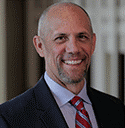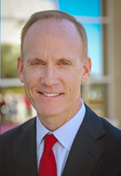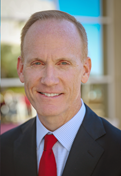Harry S. Dent Jr.'s Blog, page 108
June 22, 2016
Markets Fixated On Tomorrow’s Brexit Vote

Lance Gaitan
With only one day separating us from the historic “Brexit” vote on the other side of the pond, the implications remain unclear and the markets are as still as a deer in headlights, fixated by the uncertain outcome.
Of course, I’m talking about the United Kingdom’s vote to stay in the European Union (Bremain) or to exit (Brexit).
The polls show the vote will be tight, which is making the worldwide financial markets churn.
Stocks sold off sharply last week when polls suggested an exit and then rallied back when a new poll showed a swing to stay.
No one really knows what exactly will happen if Britain exits the EU… but the propaganda, speculation and posturing from both sides of the debate have reached a fevered pitch.
Trade is easier for the UK if it remains, but regulations will continue burdening those same trade deals.
Travel is also easier within the EU, but immigration policies won’t allow Britain to control the large flow of “undesirable” (and possibly dangerous) immigrants from Syria.
The British economy would probably take an initial hit from the exit, but longer-term it might be better off according to Brexit proponents.
On the other hand, the economy might take a hit and suffer longer-term because of the time it would take to renegotiate trade deals currently in place with the EU trading bloc.
This vote has temporarily taken some focus away from central bank action and market speculation on what they will do next.
It has also come about just in time, because it’s been getting more apparent that central bank action has had less and less effect on asset prices.
The whole point of worldwide central bank stimulus is to generate spending, or hopefully convince consumers to borrow cheaply and spend since they can’t make anything by saving.
Central banks are simply hoping their meddling will produce increased economic activity for their respective economies.
In other words, central banks have experimented with rate cuts, zero interest rates, quantitative easing (bond buying or money printing) and negative interest rates without success.
These policies haven’t fueled the desired economic outcome.

Unfortunately, when everyone is doing the same things around the world, the result is that unnaturally depressed interest rates spur investors to riskier assets.
It’s also less and less effective when everybody’s doing the same thing. That’s why we’ve seen the bubble in stocks that just refuses to pop.
Japan has been fighting this battle (of deflation, demographics, debt-deleveraging and currency strength) for decades.
Their stock market has moved higher but their economy, deflation and demographics are still a problem.
They’re also fighting to keep their currency weak so their exports and corporate profits strengthen.
 Japan has been the poster child of central bank creativity and failure.
Japan has been the poster child of central bank creativity and failure.
And then the U.S. followed their game plan of manipulation, which was then followed by the European Central Bank. But then let’s not forget about China, who is in the game too!
It’s the same old story from all the central banks: it hasn’t worked as planned because we haven’t done enough!
No, it hasn’t worked as planned because it doesn’t work.
Harry saw what was happening in Japan in the late 80s and predicted what would happen there. Central banks can’t fight demographics, they can’t create jobs with their policies and they can’t create economic prosperity out of thin air!
The Brexit vote is creating market volatility, or at least the uncertainty of the outcome is.
For now, there’s nothing that bankers can do but sit on the sidelines until after the vote is over Thursday.
But after that, you can count on central banks to try and fix what’s been broken.

Lance Gaitan
Editor, Treasury Profits Accelerator

The post Markets Fixated On Tomorrow’s Brexit Vote appeared first on Economy and Markets.
June 21, 2016
BREXIT: Breaking Up Is Hard To Do

Rodney Johnson
British Prime Minister David Cameron must be frustrated with Brexit. He has long pushed for Britain to remain in the European Union (EU), but the vote is turning against him. Like a parent responding to a child who just realized that adults really can’t force him to do anything, Cameron’s struggling to persuade the population to see things his way.
He tried telling people about the wonderful, harmonic world they now enjoy as a pan-European group, but that didn’t fly. He waved white papers estimating that British GDP would fall 3% to 4% per year, but still no dice. So now, he has thrown down the fear card.
 If Britain leaves the EU, trade will suffer, GDP will fall, tax revenue will take a hit, and the government will have fewer resources to pay for healthcare and retirement benefits.
If Britain leaves the EU, trade will suffer, GDP will fall, tax revenue will take a hit, and the government will have fewer resources to pay for healthcare and retirement benefits.
If you vote for a Brexit, Cameron tells Brits, then you’re risking your health and your pension!
Britons aren’t taking the bait.
The latest polls show the British Exit (Brexit) crowd ahead of the British Remain (Bremain) crowd by more than 5 points. As the June 23 vote gets closer, the Brexit group is gaining ground.
Cameron and his Bremain sympathizers cannot figure it out. Life in the EU is pretty good, with a free flow of trade and capital, and easy travel for citizens.
And it’s not like the burdens of EU membership are terrible. Just a handful of regulations on production, commodities, pricing, and various other aspects of trade, but nothing draconian.
Curbing the free flow of people from the EU, where immigration recently became a hot button, is an issue, but England will remain a destination from its previous colonies.

Manchester Town Hall is the venue where the result of the referendum will be declared.
If they leave, Britain will need to negotiate new trade agreements with the EU, develop new border controls, and figure out what to do about capital flows. It’s all doable, but it will be a negotiating nightmare.
This is Cameron’s dilemma. Even though sticking with the EU makes sense on paper, there’s something about it driving his population away. It seems obvious, but he still fails to understand the changing mindset sweeping through the Western world.
After the financial crisis, things are different.
In the late 1990s and mid 2000s, we had a tough time convincing people that the U.S. markets would suffer a dramatic downturn. People couldn’t understand how baby boomers would slow their spending and become risk averse. It was all part of our demographic research on predictable consumer spending, but still, many had to see it to believe it.

The Baby Boomers are getting older and their kids are having far less kids today.
When asked how the world would look in the years after a downturn, we often talked about financial markets and economic factors (lower returns, lower interest rates, slow GDP growth), but we also hit on social issues.
Harry Dent told audiences that social unrest would be the order of the day. Citizens who had never voted would demand change as they saw their standard of living erode, and violence would be common in city centers.
We weren’t talking about mass immigration like they have in Europe, but instead widespread discontent. The problem is that the Average Joe won’t see opportunity like he did before, and he’ll want someone to blame.

Trump and supporters attend a rally in Muscatine, Iowa, in January 2016. Multiple supporters hold up signs, which read “The silent majority stands with Trump”.
That’s where we are today. Whether it’s right or wrong, this point of view is showing up in politics, immigration, education, finance, and even international economic cooperatives.
People are frustrated and plagued by the sense that we’re on the wrong track, and need to make a course adjustment. But no one knows what the new course should be, which leaves us with “anything but what we’ve got right now.”
The mood won’t change until people see their opportunities improve.
That won’t happen until the current down cycle of consumer spending finally bottoms, which should be in the early 2020s. Prime Minister Cameron, and the status quo in general, don’t have a chance. People have their pitchforks ready, just itching to join a mob, demanding change.

Food shortages are more common now than ever in Venezuela.
The sad part is that even if the Brexit crowd wins the day, it won’t give them what they want. They’ll have greater control over some trade issues, and can thumb their noses at Belgian regulations on migration and immigration, but simply leaving the EU won’t make Western European populations, among Britain’s biggest trading partners, any younger.
What we all need are more clients for the goods and services that we provide. Greater sales, both at home and abroad, would mean more jobs, higher wages, and rising standards of living.

July 3, 2015: Demonstration for voting NO in front of the Greek parliament, Syntagma Square, Athens.
On this front, at least Brits and Americans can see some light at the end of the tunnel. Our young millennial generation is bigger than the boomers, though spread over more years. Countries like Japan, Germany, Spain, and Italy aren’t so lucky.
While most of the conversation regarding the possible Brexit centers on economics and regulations, the Brits should at least consider one of the main reasons for economic cooperation in the first place.
If your financial future is tied to your neighbor’s financial future, you’re much less likely to start a war. A Brexit won’t lead to war specifically, but a wave of isolationism across the globe would make armed conflict that much more likely.

The post BREXIT: Breaking Up Is Hard To Do appeared first on Economy and Markets.
June 20, 2016
The Gilded Age Of A 60/40 Portfolio Split Is OVER

Charles Sizemore
The traditional 60/40 stock/bond allocation, long the linchpin of portfolios, is broken, and it’s not coming back together any time soon.
As investors, we have to move on.
I know, I know. The 60/40 portfolio is actually having a decent 2016. A 60% allocation to the SPDR S&P 500 ETF (SPY) and a 40% allocation to the iShares Core US Aggregate Bond ETF (AGG) would be up about 3% year to date.
Don’t get used to it. Looking ahead, the math doesn’t work out.
 Let’s take a look at the numbers. Back in 1980, the 10-year Treasury yielded a fat 11.1%, and stocks sported an earnings yield (calculated as earnings / price, or the P/E ratio turned upside down) of 13.5%.
Let’s take a look at the numbers. Back in 1980, the 10-year Treasury yielded a fat 11.1%, and stocks sported an earnings yield (calculated as earnings / price, or the P/E ratio turned upside down) of 13.5%.
This implied a back-of-the-envelope portfolio return of about 12.5% per year going forward, and for much of the 1980s and 1990s that proved to be a conservative estimate.
The 60/40 portfolio was a great allocation for the nearly four decades leading up to today.
But what about today? The 10-year Treasury yields a pathetic 1.6% and the S&P 500 trades at an earnings yield of just 4%. That gives you a blended portfolio expected return of an almost embarrassing 2.8%. That’s just barely higher than the rate of inflation.
Now, nothing about these returns estimates is set in stone. It’s not impossible that stocks could continue to enjoy future returns more in line with their past returns, however improbable it might be.

The Gilded Age: Tsarskoye Selo, Catherine Palace. The Amber Room in 1917.
But I can’t say the same for bonds. Starting at a 1.6% yield to maturity (or even the 4% you might find on a mid-grade corporate bond) it’s impossible to have returns going forward match anything close to the returns of the past.
Bond yields would have to go negative, and I don’t mean the -0.15% we see today on the Japanese 10-year bond. I’m talking -5% or -10% or even more. That’s not going to happen.
So if the traditional 60/40 portfolio is dead, what are investors supposed to do with their money?
I’d offer the following suggestions:
1) Take a more active approach to investing
To the extent you invest in traditional stocks and bonds, don’t be a buy and hold investor. Yes, low fees are great. But in 2008, when the market was rolling over, did you really care that your index fund only charged you 0.09% per year in management fees?
Instead, try a more active strategy, perhaps focusing on value or momentum.
Here at Dent Research, we specialize in momentum strategies. Rodney’s Triple Play Strategy uses a sophisticated “relative strength model” to find stocks showing upward momentum, regardless of what the market is doing.
Likewise, Adam O’Dell’s Cycle 9 Alert identifies and profitably follows trends, be they bullish or bearish.
2) Invest outside the market
If you’re willing to get your hands dirty, consider starting your own business. Some of the best business ideas were born in very difficult economic times. Yes, starting your own business is “riskier” than working for a paycheck. But having a day job isn’t exactly risk free… just ask anyone who works in oil and gas today.
If you’re looking for a business idea, circle back to Harry’s demographic work. Ask yourself, what will the baby boomers need as they age… or what will the millennials need as they settle down and start families? There will always be an opportunity out there for someone willing to hustle.
3) Consider a truly alternative asset allocation.
The 60/40 portfolio has stood the test of time. Or has it?
That’s actually pretty debatable. In the 1970s, both stock and bond returns were terrible. Though what would you expect; this was the decade that gave us earth tones and disco, so clearly the world had gone more than a bit mad.
In any event, today’s market is fundamentally different than those in decades past. We’ve never been in a world of negative interest rates and central-bank-driven economics. A different era needs a different allocation.
For a long time, I’ve advocated using market-neutral and long/short strategies in lieu of bonds. A well-constructed long/short portfolio will do a lot of what you would want a bond portfolio to do; it will reduce volatility and give you a stream of returns that are mostly uncorrelated to the stock market.
In a long/short portfolio, you buy stocks that you expect to rise in value and sell short stocks that you expect to fall. But since your portfolio is roughly balanced, you’re pretty well insulated from broad market moves. Your portfolio wins or loses based on the movements of the individual stocks. Whether the market goes up, down or sideways doesn’t matter much.
To achieve that balance, our resident Forensic Accountant, John Del Vecchio, offers a long/short service, Forensic Investor.
Forensic Investor is not fully market neutral; its recommendations will be net long or net short based on John’s view of the market.
But it absolutely offers a hedged alternative that stands to make money in bull and bear markets alike.
Well…?
Will a collection of strategies like these beat the returns of a 60/40 portfolio in the years ahead?
We’ll certainly find out soon enough. But the way I look at it, at least they give you a fighting chance to earn a respectable return.
I definitely can’t say the same for a 60/40 portfolio.

Charles Sizemore
Portfolio Manager, Boom & Bust

The post The Gilded Age Of A 60/40 Portfolio Split Is OVER appeared first on Economy and Markets.
June 18, 2016
Introduction From ENM’s New Editorial Director
Hello there. My name is Robert Johnson and I’m the new Editorial Director for Dent Research.
 I’m taking over the Economy and Markets Weekly-Update from Chris Cimorelli, who wrote you about me last week. As, I’ll be assuming the same familiar rapport with all of you, I reckon you should know me, a bit, as well.
I’m taking over the Economy and Markets Weekly-Update from Chris Cimorelli, who wrote you about me last week. As, I’ll be assuming the same familiar rapport with all of you, I reckon you should know me, a bit, as well.
So, while normally I’ll be pulling together the larger market themes our team writes about throughout the week, or whatnot — this time we’ll do things a bit differently — and I’ll give you a brief rundown about myself, so that we can get to know each other better from there.
I never really considered journalism as a career until my Army discharge in 2005. Back then, I was at Walter Reed Army Medical Center wrapping up a two-year medical discharge, just mildly injured, but surrounded by thousands of other, far more devastated soldiers.
The conditions and the protocols forcing all those soldiers and their families through even more needless hell had an impact on me and in 2007, Dana Priest ripped the lid of the whole situation for the Washington Post. The fallout was impressive: two generals gave up their commissions and a top Bush official resigned.

Robert Johnson – Shootin’ the Pope
I promptly applied to graduate school to earn my Master’s in journalism. I knew, though, that following the 2008 recession that I wanted to write about finance. Despite Walter Reed, no other topic seemed as vital.
This is how I got there.
For half-a-year I started at University of Missouri School of Journalism grad’ school. Working and studying with SABEW Chair Marty Steffens in her Business and Economics Journalism program.
From there I went to New York University (the GI Bill had a brief window where it paid outrageous private school rates for a few months) and I jumped on it.
In the Business and Economic Reporting program, I had classes at Stern Business School, as well as the journalism school, and took a job with Business Insider.
My military stories, at BI, proved so popular that I was asked to originate a Military & Defense vertical (section) within the site.
I did that…
…and started traveling a lot with the Navy…. here’s the flight deck of the USS WASP.

Robert Johnson – USS WASP
And wound up visiting some pretty out of the way places. Like Guantanamo Bay Naval Base and Prison…

Robert Johnson – Guantanamo Bay Prison, Camp 6
And Cairo’s, Tahrir Square… Which isn’t really a square at all so much as a very big and dusty traffic circle.

Robert Johnson – Tahrir Square, 2013
Despite all the travel, I managed to get that NYU MA and for the past couple of years I worked in Silicon Valley, where I picked up this Google award for a local nonprofit.
Nonprofit life, and California life, however were not my thing and I accepted a job at 100 Wall Street in NYC for a media startup called Pixable.
I loved working on “The Street” and passing the NYSE each day for lunch. There’s a hum and a tension all through the Financial District. I miss that energy, but I do not miss New York City.

Robert Johnson 2015 – East Village Gas Explosion and Fire
So, here I am in Baltimore, bringing what I learned from NYC media and finance reporting from former co-workers like Henry Blodget and Joe Weisenthal to bear here at Economy and Markets for Dent Research.
I couldn’t be more excited. I work with some of the best in the industry and I can walk to work from the Inner Harbor.
Life here, for me, could be much, much worse and I look forward to expanding our rapport and getting to the heart of the things that matter to you and Team Dent.
So, that’s me. If you have any suggestions, comments… or praise! always feel free to email me at rwjohnson@dentresearch.com. Or follow me @JohnsonRW via Twitter.

Robert Johnson – Cienfuegos, Cuba, @therealcuba, Interview with Jinitera
Even if you just want a photo of mine that you find online somewhere…

The post Introduction From ENM’s New Editorial Director appeared first on Economy and Markets.
June 17, 2016
More Kids Now Living At Home Since The Great Depression

Harry Dent
More Kids Now Live At Home Than Since The Great Depression
We all know the situation in the markets is dire.
Like, really, everyone knows.
There’s an old phrase from Margaret Thatcher’s day (and mine, I suppose) that has recently come back into use: There is no alternative.
There’s even an acronym: TINA.

There is no alternative
Example of a campaign advertising material of the CDU for the 1994 election for the Landtag of Thuringia.
That’s quaint, and all, but this meatily numbered piece shows the heart of what that phrase means.
There is no alternative, the markets will correct. They have to, regardless of how hard the Fed fights.
We’re long overdue, and the heart of this piece is the fact that we haven’t been here, in this way, since a year or so, after the Great Depression.
More 18- to 34-year-olds are now living with their parents than at any time since 1960, when the number hit an all-time low of 20%.
It’s now jumped up to 32.1%, and is as high as 36% for those with a high school education or less. The number jumped to 28% in 2007, with the Great Recession catapulting it to 32% in just seven years.
For the first time in history, living with parents has surpassed living with a spouse or partner, with over 30% of children now living with parents, as the chart below from Pew Research shows. Fourteen percent live alone or as a single parent, with more women at 16% than men at 13%.

The “other” category includes living with siblings, friends, and grandparents, or in dormitories.
The reason for this long-term trend is the decline of romantic coupling, and couples – once they do form – holding off on tying the knot.
The median age of marrying couples rose from 21.3 years old (22 for men, 20 for women) in 1956 to 27.8 today (28.3 for men, 27.2 for women). It has jumped two years just since the Great Recession of 2008.
Twenty percent today have never married and Pew says that 25% of adults will never get married… at any age! Financial security and a steady job is a prime reason for the holdouts. Men with only a high school education, or less, see 23% never married versus 17% for women.
For those with a high school, or less, education, it’s 25% versus post grad degrees at 14% for men, and 20% and 16%, respectively, for women.
With higher joblessness, the rate of unmarried men sits at 36% for blacks and 26% for Latinos. Asians are at 19% and whites at only 16%.
There was only one time in modern history where a higher percentage of kids lived with parents and that was 35% in 1940 – in the late years of the Great Depression.

I am confident this rate will exceed that in the Great Depression ahead by 2022.
Not surprisingly, divorced people have less interest in marrying again than people who have never gotten married in the first place. Almost half, or 45%, say “no thanks” to ever getting married again.
The most telling charts are the following ones. The most dramatic shift has come from non-college grads, falling from 60% of those married or living together in 1960, down to 27% in 2014, with 36% living with parents.
For the college-educated, people who were married or living together peaked in 1960 at 79% and has declined to only 46%, with 19% living with parents.


The post More Kids Now Living At Home Since The Great Depression appeared first on Economy and Markets.
June 16, 2016
In This Calm Market, It’s Time To TrimYour Sails

Adam O’Dell
If you’re feeling a sharp pain in the back of your neck – a la whiplash – you’re not alone. The stock market has been one heck of a rollercoaster ride this year!
At this point, it’s hard to believe that the S&P 500 is up 1.8% year-to-date… after losing 10% in the first five weeks of the year!
Investors who sold at mid-February’s low are kicking themselves right now. And most investors still don’t know whether it’s a good time to “reinvest” now that most stocks are moving in an upward trajectory again.
Their conundrum is… a ton of individual stocks have already made “new highs.”
Twenty-six percent of stocks trading on the New York Stock Exchange (NYSE) hit new 52-week highs in the last two weeks. That signals, for now at least, that momentum is on the side of bullish investors. (But it also means anyone who sold in February must reinvest at higher prices.)

A system like my very own Cycle 9 Alert.
I’ll be honest – I didn’t necessarily “see” this whiplash-inducing stock rally coming… but that’s why I built my Cycle 9 algorithm in the first place – to pick up on signs that even the most skilled investor can miss.
You see, even though every warm-blooded investor was feeling scared and bearish after the January rout (myself included), my Cycle 9 algorithm continued to identify unique buying opportunities.
Those buying opportunities are currently handing my readers gains of… 20% (on a home improvement retailer)… 22% (on a beverage company)… and 106% (on an industrial cable manufacturer).
Realize, we never would have “seen” these lucrative opportunities if we’d been stubbornly locked into the bearish mindset that the January sell-off brought about.
 But that’s the great thing about Cycle 9 Alert… it automatically adapts to changing market conditions.
But that’s the great thing about Cycle 9 Alert… it automatically adapts to changing market conditions.
There’s a saying that goes…
“The pessimist complains about the wind; the optimist expects it to change… but the realist adjusts the sails.” ~ William Arthur Ward
That’s what Cycle 9 Alert is built to do – it “adjusts the sails,” so to speak, to match the prevailing wind.
Earlier in the year, I wrote that seven of the nine stock sector ETFs we track in Cycle 9 – and all 15 country stock market ETFs – were in bearish trends.
But, as the year has worn on, most of those markets gradually improved… to the point where, today, seven of nine stock sector ETFs – and almost half of country stock market ETFs – are in bullish trends.
And best of all, as the trends in individual sectors and individual stocks began to improve, Cycle 9 Alert’s algorithm picked up on them.
My system allowed my subscribers to buy into these bullish stock opportunities before they were hitting new highs… and now they’re reaping the rewards!
That’s how my proven system is designed to work. It’s built to automatically adapt to changing market trends (even if those trend changes confuse the hell out of ordinary people, like me and you).
Philosophically speaking, I believe that’s the stock market’s job – to confuse the hell out of people!
 If investing were easy – everyone would do it well. (And the unemployment rate would be close to 100%… we’d all just live off our capital gains and investment income, right!?)
If investing were easy – everyone would do it well. (And the unemployment rate would be close to 100%… we’d all just live off our capital gains and investment income, right!?)
But sadly, most investors struggle to earn consistent profits from the stock market.
My experience has taught me that the stock market only rewards those investors who are willing to endure the angst of uncertainty and short-term losses… only those investors who have the discipline to stick to a proven methodology, through thick and thin.
And that’s exactly what I plan to do.
This is why I absolutely love running my Cycle 9 Alert service.
I get to help my readers invest with a strategy that automatically adapts to changing market conditions… a strategy that’s worked well for four years running… a strategy that will continue to work, no matter what Mr. Market (or Ms. Yellen) decides to through our way!
And hey, it could even save you a trip to the doctor.
Adam O’Dell


The post In This Calm Market, It’s Time To TrimYour Sails appeared first on Economy and Markets.
June 15, 2016
Icahn And Soros Make The Short Of A Lifetime

John Del Vecchio
It’s one thing when some online commenter yells “fire” in the crowded stock market theater, expecting investors to jump ship and dump their investments before the “Crash of a Lifetime.” It’s another when multi-billionaires who made their fortunes from speculation take huge bearish bets in the market.
The billionaires are positioning themselves for a big butt kicking in the market.
One after the other, they are lining up their investment strategy for negative stock returns ahead. George Soros, who famously made $1 billion in a day shorting the British Pound, has made a massive short bet in the S&P 500.
Carl Icahn also made a huge bearish shift in his portfolio. According to Barron’s, he was 149% short at the end of the first quarter compared with 25% at the end of 2015 and 4% net-long a year ago.
 Now Paul Singer, less well-known than Soros and Icahn, but still an investment powerhouse in his own right, is joining the fray and loading up on gold.
Now Paul Singer, less well-known than Soros and Icahn, but still an investment powerhouse in his own right, is joining the fray and loading up on gold.
Are these Wall Street legends making the right call? In my own opinion, the odds favor lower stock returns ahead. Much lower.
First, we are in the midst of one of the longest bull markets ever. Whenever there’s a little scare, a magical wave of buying comes into the market to prop up stock prices. Even the worst start to a year ever couldn’t stop stock prices from advancing in 2016. But, that is not sustainable.
Not only is this bull market long in the tooth, but valuations are also in nosebleed territory. The median / price sales ratio on the S&P 500 is at its highest ever. There is nowhere to hide.
How can I learn to short stocks?
So if you want to ride Soros’ and Icahn’s coattails, what can you do?
Well, there are a few ways to short the stock market. You can bet on a fall by buying put options. Of course, your timing might have to be impeccable in order to cash in on your bearish bet. There’s nothing worse than being right but having the wrong timing.
You can also get against an index like the S&P 500. In general, I think inverse funds are bad bets. For one, when you short the S&P 500 you are shorting companies like Apple [Nasdaq: AAPL] and General Electric [NYSE: GE].

Even worse are levered inverse funds that re-set their portfolio daily. The higher volatility of bear markets tends to chop up these funds over time. So, it’s possible that the market could fall 20% but you still lose money owning a levered inverse fund. Your outcome depends to a large extent on the progression of daily returns in the stock market. No one can predict that.
The largest companies in the U.S. market dominate the S&P 500 index. Why would you short the world beaters? Sure, they may go down, but will they go down as much as a third-tier company operating in one market that just saw its largest customer go bankrupt? Probably not.
That’s why, at Forensic Investor, we prefer to short individual companies. Companies that have aggressive accounting where management is pulling the wool over investors’ eyes and artificially propping up their stock price can lead to solid returns, even in a bull market.
But, in a bear market where there’s real selling and real blood in the streets, investors tend to sell these low-quality stocks first and ask questions later. That can lead to outsized returns from the Dark Side.
Sometimes we will short an entire sector, like technology, where the entire space may be exposed to low earnings quality. But, the real juice in a bear market comes from individual stocks imploding.
While the S&P 500 was cratering in 2008 there were many stocks falling 2x-2.5x what the market was doing.

The post Icahn And Soros Make The Short Of A Lifetime appeared first on Economy and Markets.
June 14, 2016
Flexport Wants To Be The Uber Of The Oceans

Ben Benoy
When was the last time you ate a simple plain bagel? Room temperature, non-toasted, no spread, no toppings.
Unless you were literally starving, you probably only did it once because it tasted like a cardboard box. Not tasty. Not sexy.
Well, there’s a trillion-dollar global industry out there that’s almost un-sexy as that plain bagel, but ripe for genuine start-up technology disruption!
I’m talking about something called international freight forwarding, a small slice of the plain old shipping business.
Size Matters
See, anything over 330 pounds, or 150 kilograms for you metric lovers, becomes “freight”, and it gets sent using non-traditional parcel methods.
Smooth running large-scale businesses require global manufacturing and retail chains that are truly international. Freight delivery, however, can be a very choppy affair; handed off between separately owned and operated methods of transportation like boats, planes, trains, and trucks for the last mile.

To make matters worse, add in customs and border protection regulations and inspections for each departing and receiving country and you’ve got quite a task!
Freight forwarding services are the companies handling the details of negotiating best prices for each leg of the journey, with each transporter, and working the various customs paperwork.
Unfortunately, the tools most freight forwarding providers have available to them, up until recently, have been Stone Age. Mostly a mix of Excel spreadsheets, email, fax, and paper manifests to ship an endless stream of items around the world.
This allows for basic documenting of shipping information, but doesn’t provide any real time insight when breaks occur in the supply chain or overspending.
It’s a Revolution
 A startup called Flexport has flipped this archaic industry upside down by providing free software that indexes all available carriers into a searchable database used to organize and track shipments.
A startup called Flexport has flipped this archaic industry upside down by providing free software that indexes all available carriers into a searchable database used to organize and track shipments.
The crazy part is that Flexport offers its own shipping service optimized from all the collected shipping data it has crunched in its own system.
The software runs analytics accounting for all routes, rates, speeds, and customs compliance data that allows shipments to be delivered in the most efficient and cost effective manner possible.
This is like a self-toasting bagel that gets better every time you eat it and provides feedback on how good it tastes!
Ryan Peterson, Flexport CEO, tells industry experts “We’re bringing transparency to a black box industry”.
And the industry is listening! Flexport has captured $26.9 million in venture funding, and has grown the volume of goods it has sent this year along by 16x.
In 2016, Flexport moved freight to, or from, 64 countries for over 700 clients, totaling $1.5 billion in merchandise shipped.

Flexport
The 800 Pound Gorillas
But what about the 800lb industry gorillas, FedEx & DHL, and all their brainwashing “I have logistics people” commercials?
The infrastructure they have built for their massive operations just isn’t nimble enough to pivot to the newer, more efficient, technology Flexport, and other startups are using.
When DHL bought three traditional freight forwarding service companies for $15 billion, they ended up spending $960 million with IBM for an IT Backbone that completely failed. The IT project was written off as a complete loss!
All of this while startups like Flexport and Expeditors continue to grab market share.
Bottom line, boring business can be big business if the right disruptive technology is applied.
Count on your Dent Research team to provide you the latest insights into technology that you can profit from for market plays.
Ben


The post Flexport Wants To Be The Uber Of The Oceans appeared first on Economy and Markets.
June 13, 2016
How Bankster Melba Acosta-Febo Is Trying To Swipe $3.5 Billion

Rodney Johnson
We all know the U.S. is not a republic. If it were, then law would prevail when conflicts arise, and they’d apply equally to everyone.
Although we know that’s not the case, this latest example from government officials confirm it, yet again.
If you stole a hundred bucks from someone, you might try to avoid them for a while. If you stole $100,000, you might even consider moving across the country. But what if you stole $3.5 billion?
Would you move to Bolivia, or some other remote locale with no extradition treaty? Nah. That’s way too much work.
More Government Lies
Especially if you’re an elected official. If you’re in government and steal from investors, you can simply do what Melba Acosta-Febo did. Keep climbing the government employment ladder, with all the perks and benefits that come with a high-ranking title.

Melba Acosta-Febo
Acosta-Febo is currently the President of the Puerto Rico Government Development Bank, which is a clearinghouse for government financing in the Commonwealth. But her previous day job was Secretary of the Treasury for the island government. In that capacity, she signed off on the $3.5 billion general obligation bond that Puerto Rico issued in 2014.
In the offering statement (OS) for that bond, Acosta-Febo went to great lengths to explain that Puerto Rico faced severe financial risks, so investors should proceed with caution. So far, so good. Then she highlighted the section of Puerto Rico’s constitution that guarantees general obligation bond payments will be made before all other payments.
The law establishes the order of priorities as follows: first, the payment of the interest on and amortization requirements for public debt (Commonwealth general obligations, including the Bonds, and guaranteed debt for which the Commonwealth’s guarantee has been exercised); second, the fulfillment of obligations arising out of legally binding contracts, court decisions on eminent domain, and other unavoidable obligations to protect the name, credit and good faith of the Commonwealth; third, current expenditures in the areas of health, protection of persons and property, education, welfare, and retirement systems; and fourth, all other purposes.

Puerto Rico
In addition, the OS explains the legislative actions giving the Commonwealth officials the authority to issue the bonds, and goes to great lengths to illustrate how, even with the new bonds, Puerto Rico will remain under its legal debt ceiling. There’s even a section where legal counsel states these bonds are duly issued and fit the parameters (general obligation) designated by Acosta-Febo.
At this point we could all, as investors, be forgiven for thinking these bonds were properly issued general obligation bonds to be paid before all other commitments. After all, that’s exactly what the OS stated. But no… Now, Acosta-Febo and Puerto Rico Governor, Alejandro Garcia Padilla, want to trash this legal contract between bondholders and the Commonwealth. Their new stance is that the entire bond issue, all $3.5 billion, was illegal.
According to a report from the newly formed Public Credit Comprehensive Audit Commission, this bond issue violated Puerto Rico’s debt ceiling. They disagree with Acosta-Febo’s math that showed the bonds were compliant when issued, and their remedy is simply to renege. They think not paying the bondholders a nickel is the way to go.
If the commission has it right, and Acosta-Febo has it wrong, there must be a reason. Maybe she wasn’t smart enough, or educated enough, to understand all the factors. But that seems unlikely. She’s an accountant, and a lawyer. She has an MBA from Harvard. She was a Corporate Counsel at Puerto Rico’s largest law firm, and a Tax Consultant at Price Waterhouse. Before her stint as Treasury Secretary, she held several positions at R&G Financial Corp, including Chief Administrative Officer, Corporate Risk Manager, and Chief Financial Officer.

Puerto Rico Capitol Building
She’s Plenty Smart
There’s no doubt she’s plenty smart enough, and if the bonds were duly issued, then the commission is lying. If the bonds weren’t authorized, then Acosta-Febo is lying. The Governor of Puerto Rico has already explained he will not pay bondholders ahead of salaries and pensions, even though his constitution explicitly requires it, no matter what. Everyone seems to agree that the bonds can just blissfully be ignored.
Everyone, that is, except the bondholders. Remember them? The people who, based on the contract offered by the Puerto Rican government, coughed up $3.5 billion. Now they’re told, “Too bad.”
If the contract is invalid, then the restoration of both parties to their original position should be mandated. This would require Puerto Rico handing $3.5 billion back to bondholders, who would have to give back any interest received. But that’s not what the Puerto Ricans want. They want to keep all the money and have no responsibility whatsoever. How is that equitable or fair?
And what about the outright lies in the offering statement provided by Acosta-Febo or the unconstitutional acts of the governor? Where are the indictments against these people? Why is it that government officials can lie, break the law, steal from investors, and get off scot-free?
When these Puerto Rico bonds were issued in 2014, I told readers to stay away. At the time, I thought the island was broke and would default. How quaint. Default implies the government was trying to make good. Instead, they resorted to outright theft.

Old San Juan
This happened in Detroit just three years ago, using the same ruse. The city claimed over $1.5 billion of bonds were illegally sold, and therefore bondholders had no claim. As city and state budgets around the country stretch thin, expect more of this sort of thing. Government officials will look for any way to keep constituents from paying the cost of their misdeeds, even if it means stealing from investors.
At a time when more investors are snapping up municipal bonds for yield and safety, it is imperative that you do your homework.
If you don’t, you might wind up owning the next Puerto Rico. And nobody wants that.

The post How Bankster Melba Acosta-Febo Is Trying To Swipe $3.5 Billion appeared first on Economy and Markets.
June 11, 2016
WEEKLY WRAP-UP: Economy & Markets
 By Chris Cimorelli
By Chris Cimorelli
It’s been a fun ride, but after this week I’m turning this dispatch over to the newest member of the Dent editorial team, Robert Johnson. I mentioned in my P.S. last week that I was flying to Baltimore to meet a new team member. Well, that was why.
Robert is our new Editorial Director at Dent Research. He comes to us with an MA in Journalism from NYU and a diverse background as a U.S. Army veteran… a former Editor at Business Insider… and most previously as a photojournalist & Senior Correspondent for Wall Street startup Pixable.com (if he’s nice, he might even share a few photos).
I’m not going anywhere, I’ll just be working in a different capacity in the editorial department. But you’re in good hands with Robert.
That said, if you’re ever in Delray Beach, pop into the office and say hello…
Ok… so did you see that email Harry sent on Tuesday? The one about the $250 million condo on Manhattan’s billionaire’s row?
Mind you, the condo is merely under application to go for that much… but is that crazy or what?
Several new tall, skinny towers will pop up along the southern side of Central Park over the next few years. They’re mostly residential buildings – as if Manhattan needed any more expensive condos – that will likely make the broader housing market there even pricier.
As of now, a 750 square-foot condo rents for about $3,000 a month!
But this one particular condo – the $250 million penthouse at 220 Central Park South – will span four stories, with 16 bedrooms, 17 bathrooms, and five balconies… all at 23,000 square feet.
23,000.
Sounds like a bubble ready to pop…
Rodney’s email to you this week was just as shocking.
During the financial crisis, the University of Texas Investment Management Co (UTIMCO) built a huge gold position – 6,643 ounces.
But instead of holding their gold in New York like everyone else does, Texas officials took delivery of it. To store it, they’re in the process of building their own gold depository.
This is unprecedented… but it makes sense.
The idea behind holding physical gold is to have it on hand in case of financial calamity. That’s hard when your gold is 2,000 miles away in another state.
But here’s the really interesting part. As Rodney said: “The state legislature authorized a bullion depository that can receive and send fund transfers.” That makes the depository more like a bank… and not just any bank… one with deposits backed by gold.
Out of nowhere, Texas is setting up a high profile alternative to today’s banking system as we know it… the one in which money isn’t really backed by anything.
If I’ve learned anything this election cycle, it’s that Americans don’t really trust being in power.
So it’s no surprise that something like this is happening in Texas.
Speaking of the election… have you seen our latest infographic?
You might remember an email Harry sent a month or two ago, saying that the democrats are likely to retain control of the White House through about the year 2036. The economic cycles Harry uses to predict boom and bust patterns favor the democrats winning.
That said, he had one important caveat to that equation.
If the economy gets worse into November, it would highly favor the outsider candidates that have hijacked their respective parties.
Remember that abysmal jobs report that happened a week ago? The one where the economy added just 38,000 jobs, the lowest in six years?
One bad report does not a recession make… but we should be very wary of any disappointing news. As Harry said, it will only feed into Trump’s message.
So, while economic forces largely favor a democrat winning the White House… this infographic lists seven reasons why Trump could become the next president.
Just think – the chances of the Fed hiking rates in a few days has dropped to 0% according to some sources. That means it doesn’t think the economy is strong enough to favor a rate hike. Lance covered this in Economy & Markets on Friday.
Lastly, another shout out to Adam. Recently he closed his highest winning trade ever in Cycle 9 Alert. Back in February he recommended buying call options on Pan American Silver Corp. (NYSE: PAAS), and after selling the first half for 75%… he closed out the second for 336%.
Then, this past week, he closed out another high-winning trade for 105%. On a net basis, that’s two triple-digit winners in a row! Click here to see how he does it.
Adam also delivered an important message in Monday’s 5 Day Forecast for Boom & Bust readers.
Last week, 340 stocks on the New York Stock Exchange made a new high. Perhaps this signals some last-minute investors buying at the top, or maybe it’s a catalyst for a new high in the overall market. But either way, in the near-term, this means momentum is on the side of bullish investors. Adam will alert you if that trend changes.
If you’d like to receive 5 Day Forecast – where Adam and Charles take a close look at what’s happened in the markets over the past week, offering unique insight based on their methodologies –
Hopefully I’ll see some of you at our Irrational Economic Summit in October. We just added a new speaker to the list of presenters. I don’t know if I’m supposed to mention this yet – it’s pretty recent – but his name is Dan Mitchell of the CATO Institute, and he’ll be sharing his thoughts on the election, and what it could mean for the economy and your portfolio. That’s in addition to some of the high-profile speakers already on the roster.
That’s all from me. You’ll hear from Robert next Saturday.
Ciao,

Chris Cimorelli
Managing Editor, Dent Research

The post WEEKLY WRAP-UP: Economy & Markets appeared first on Economy and Markets.



